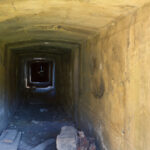Russian Mine Tragedy Shows Dangers Faced by Would-Be Rescuers

Working in a mine is one of the most dangerous jobs in the world. And when things go wrong in a mine and workers need to be rescued, those individuals who try to come to their aid may be in just as much’if not more’danger. Just look at what recently happened at a coal mine in Russia.
As reported in the New York Times, six rescue workers were killed on Feb. 28, 2016, in a failed attempt to reach 26 miners in northern Russia, who were stranded after methane explosions set off underground fires in the coal mine.
The six people killed, five members of a specialized rescue brigade and a mine employee, died in a third methane explosion as they tried to reach the trapped miners, bringing the death toll to 36.
Russia’s most senior federal disaster official declared the rescue operation over and all of the missing miners, who’d been trapped by a cave-in, dead.
The bodies of four miners were recovered after the initial disaster on Feb. 25, 2016, when methane gas, a common hazard in coal seams, exploded in two locations about 2,560 feet underground in the Severny mine.
Poor safety standards have plagued coal mines in Russia and other former Soviet republics. After a methane explosion in a Siberian mine killed 108 miners in 2007, the worst such disaster in recent Russian history, the authorities fired five mine safety inspectors for letting the site operate even though a methane gas detector had been deliberately disabled to avoid the expense of halting work during gas buildups.
Would-be rescuers of workers in confined spaces, such as silos and trenches, face similar dangers. That’s why the OHS laws in Canada spell out specific requirements for rescue efforts and emergency plans for confined spaces (also see, confined space rescue checklist).